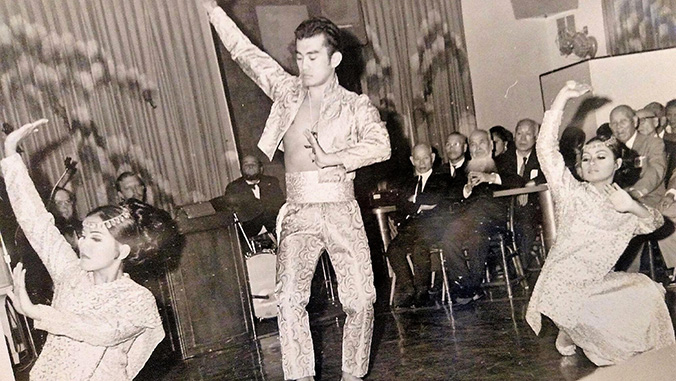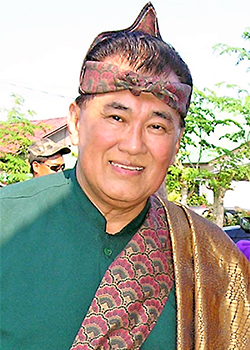
Long-time University of Hawaiʻi at Mānoa Philippine dance lecturer Wayne Mendoza received a lifetime achievement award from the United Filipino Council of Hawaiʻi for his significant and outstanding contributions to the Filipino community, Hawaiʻi and to the world with his passion for and knowledge of Philippine folk dance and culture.
Mendoza, whose roots are from Badoc, Ilocos Norte, Philippines, is iconic as an instructor, choreographer, advisor, consultant and a genuine master when it comes to Philippine folk dance. Recognized as a master dancer by the State Foundation on Culture and the Arts (SFCA), Mendoza’s journey in becoming a master dancer did not happen overnight. It took seven decades of learning and developing his skills, researching, teaching more than 9,000 dancers and students, and hundreds of performances to get there.
“Wayne Mendoza has been a highly valued teacher of Philippine dance in the UH Mānoa dance program since 1975,” said Betsy Fisher, associate chair and graduate chair of the dance program. “We extend our heartfelt congratulations to Wayne for receiving a well-deserved United Filipino Council of Hawaiʻilifetime achievement award!”
More on Mendoza

Mendoza’s journey began at 14 years old when he became interested in Filipino folk dance and began his dancing career in the late 1950s for Tito Cezar, who at that time promoted Spanish and Mexican dances.
In 1958, Mendoza went on to join The Pearl of the Orient Dance Company, a local Filipino dance group that performed at many events and festivals, including aboard the American President Lines S.S. Wilson and S.S. Cleveland.
In 1962, Mendoza took his first study tour to the Philippines to learn from the grandmother of Philippine dances, the renowned Francisca Reyes-Aquino, with whom he learned how to teach children and adults the forms and terminology of dance steps, how to count the measures of the music to create a rhythmic combination of footwork and arm movements.
When the 1970s rolled around, Mendoza was asked to be the choreographer for a dance company that put on the nightly show A Night in the Philippines that lasted more than a decade. He eventually branched out of The Pearl of the Orient and formed Himigbayan, a dance troupe that not only performed Filipino folk dances, but also created a lecture program that explained the evolution of these dances.
For years, he shared his passion for the arts as an accredited dance master of Philippine folk dance under SFCA where he mentored several apprentices. Mendoza also serves as a consultant, advisor and choreographer to several dance groups and pageants statewide, and has held workshops at mainland universities.

